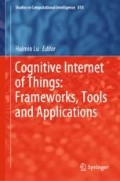Abstract
Source imaging with magnetoencephalography (MEG) has obtained good spatial accuracy on the shallow sources, and has been successfully applied in the brain cognition and the diagnosis of brain disease. However, its utility with locating deep sources may be more challenging. In this study, a new source imaging method was proposed to find real brain activity on deep locations. A sensor array with MEG measurements including 306 channels was represented as a low-rank matrix plus sparse noises. The low-rank matrix was used to reconstruct the MEG signal and remove interference. The source model was estimated using the reconstructed MEG signal and minimum variance beamforming. Simulations with a realistic head model indicated that the proposed method was effective.
Access this chapter
Tax calculation will be finalised at checkout
Purchases are for personal use only
References
Barnes, G.R., Hillebrand, A.: Statistical flattening of MEG beamformer images. Hum. Brain Mapp. 18, 1–12 (2003)
Zumer, J.M., Attias, H.T., Sekihara, K., Nagarajan, S.S.: A probabilistic algorithm integrating source localization and noise suppression for MEG and EEG data. Neuroimage 37, 102–115 (2007)
Baillet, S.: Magnetoencephalography for brain electrophysiology and imaging. Nat. Neurosci. 20, 327–339 (2017)
Nissen, I.A., Stam, C.J., Citroen, J., Reijneveldb, J.C., Hillebranda, A.: Preoperative evaluation using magnetoencephalography: experience in 382 epilepsy patients. Epilepsy Res. 124, 23–33 (2016)
Wu, J.Y., et al.: Magnetic source imaging localizes epileptogenic zone in children with tuberous sclerosis complex. Neurology 66, 1270–1272 (2006)
Nissen, I.A., et al.: Identifying the epileptogenic zone in interictal resting-state MEG source-space networks. Epilepsia 58, 137–148 (2017)
Mattout, J., Phillips, C., Penny, W.D., et al.: MEG source localization under multiple constraints: an extended Bayesian framework. NeuroImage 30, 753–767 (2006)
Grech, R., Cassar, T., Muscat, J., Camilleri, K.P., Fabri, S.G., Zervakis, M., Xanthopoulos, P., Sakkalis, V., Vanrumste, B.: Review on solving the inverse problem in EEG source analysis. J. NeuroEng. Rehabil. 5, 25 (2008)
Lu, H., Li, Y., Mu, S., Wang, D., Kim, H., Serikawa, S.: Motor anomaly detection for unmanned aerial vehicles using reinforcement learning. IEEE Internet Things J. 5(4), 2315–2322 (2018)
Van Veen, B.D., van Drongelen, W., Yuchtman, M., Suzuki, A.: Localization of brain electrical activity via linearly constrained minimum variance spatial filtering. IEEE Trans. Biomed. Eng. 44, 867–880 (1997)
Oshino, S., Kato, A., Wakayama, A., et al.: Magnetoencephalographic analysis of cortical oscillatory activity in patients with brain tumors: synthetic aperture magnetometry (SAM) functional imaging of delta band activity. Neuroimage 34, 957–964 (2007)
Mosher, J.C., Leahy, R.M.: Recursive MUSIC: a framework for EEG and MEG source localization. IEEE Trans. Biomed. Eng. 45, 1342–1354 (1998)
Komssi, S., Huttunen, J., Aronen, H.J., et al.: EEG minimum-norm estimation compared with MEG dipole fitting in the localization of somatosensory sources at S1. Clin. Neurophysiol. 115, 534–542 (2004)
Hillebrand, A., Singh, K.D., Holliday, I.E., Furlong, P.L., Barnes, G.R.: A new approach to neuroimaging with magnetoencephalography. Hum. Brain Mapp. 25, 199–211 (2005)
Shigeto, H., Morioka, T., Hisada, K., Nishio, S., Ishibashi, H., Kira, D., Tobimatsu, S., Kato, M.: Feasibility and limitations of magnetoencephalographic detection of epileptic discharges: simultaneous recording of magnetic fields and electrocorticography. Neurol. Res. 24, 531–536 (2002)
Lin, F.H., Witzel, T., Ahlfors, S.P., et al.: Assessing and improving the spatial accuracy in MEG source localization by depth-weighted minimum-norm estimates. Neuroimage 31, 160–171 (2006)
Chen, C.F., Wei, C.P., Wang, Y.C.F.: Low-rank matrix recovery with structural incoherence for robust face recognition. IEEE Conf. Comput. Vis. Pattern Recogn. CVPR, 2618–2625 (2012)
Liu, G., Lin, Z., Yan, S., et al.: Robust recovery of subspace structures by low-rank representation. IEEE Trans. Pattern Anal. Mach. Intell. 35, 171–184 (2013)
Shabalin, A.A., Nobel, A.B.: Reconstruction of a low-rank matrix in the presence of Gaussian noise. J. Multivar. Anal. 118, 67–76 (2013)
Zhang, H., He, W., Zhang, L., et al.: Hyperspectral image restoration using low-rank matrix recovery. IEEE Trans. Geosci. Remote Sens. 52, 4729–4743 (2014)
Candès, E.J., Li, X., Ma, Y., et al.: Robust principal component analysis? J. ACM 58, 11 (2011)
Diwakar, M., Huang, M.X., Srinivasan, R., Harrington, D.L., Robb, A., Angeles, A., Muzzatti, L., Pakdaman, R., Song, T., Theilmann, R.J., et al.: Dual-core beamformer for obtaining highly correlated neuronal networks in MEG. Neuroimage 54, 253–263 (2011)
Zhang, J., Liu, C.: On linearly constrained minimum variance beamforming. J. Mach. Learn. Res. 16, 2099–2145 (2015)
Brookes, M.J., Stevenson, C.M., Barnes, G.R., et al.: Beamformer reconstruction of correlated sources using a modified source model. Neuroimage 34, 1454–1465 (2007)
Wright, J., Ganesh, A., Rao, S., Ma, Y.: Robust principal component analysis: exact recovery of corrupted low-rank matrices. In: Proceedings of the Neural Information Processing Systems (NIPS), pp. 2080–2088 (2009)
Lu, H., Li, Y., Chen, M., Kim, H., Serikawa, S.: Brain intelligence: go beyond artificial intelligence. Mob. Netw. Appl. 23, 368–375 (2018)
Nolte, G.: The magnetic lead field theorem in the quasi-static approximation and its use for magnetoencephalography forward calculation in realistic volume conductors. Phys. Med. Biol. 48, 3637 (2003)
Besl, P.J., McKay, N.D.: A method for registration of 3-D shapes. IEEE Trans. Pattern Anal. Mach. 14, 239–256 (1992)
Groß, J., Ioannides, A.A.: Linear transformations of data space in MEG. Phys. Med. Biol. 44, 2081 (1999)
Acknowledgements
This work was supported by the National Key R&D Program of China (Grant Number: 2016YFF0201002), the National Natural Science Foundation of China (Grant Numbers: 61301005, 61572055), the Beihang University Hefei Innovation Research Institute, Project of ‘The Thousand Talents Plan’ for Young Professionals, and ‘The Thousand Talents Plan’ Workstation between Beihang University and Jiangsu Yuwell Medical Equipment and Supply Co. Ltd.
Author information
Authors and Affiliations
Corresponding author
Editor information
Editors and Affiliations
Rights and permissions
Copyright information
© 2020 Springer Nature Switzerland AG
About this chapter
Cite this chapter
Hu, Y., Zhang, J. (2020). MEG Signal Reconstruction via Low-Rank Matrix Recovery for Source Imaging in Simulations. In: Lu, H. (eds) Cognitive Internet of Things: Frameworks, Tools and Applications. ISAIR 2018. Studies in Computational Intelligence, vol 810. Springer, Cham. https://doi.org/10.1007/978-3-030-04946-1_1
Download citation
DOI: https://doi.org/10.1007/978-3-030-04946-1_1
Published:
Publisher Name: Springer, Cham
Print ISBN: 978-3-030-04945-4
Online ISBN: 978-3-030-04946-1
eBook Packages: Intelligent Technologies and RoboticsIntelligent Technologies and Robotics (R0)

